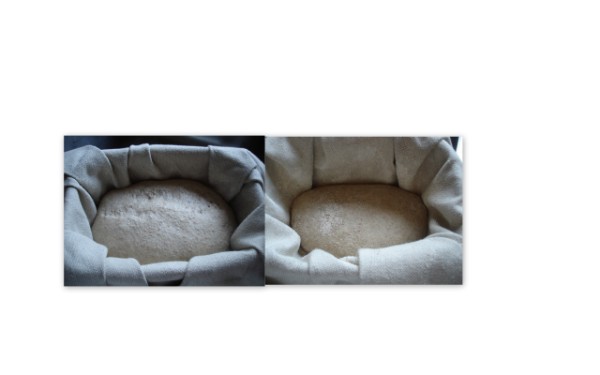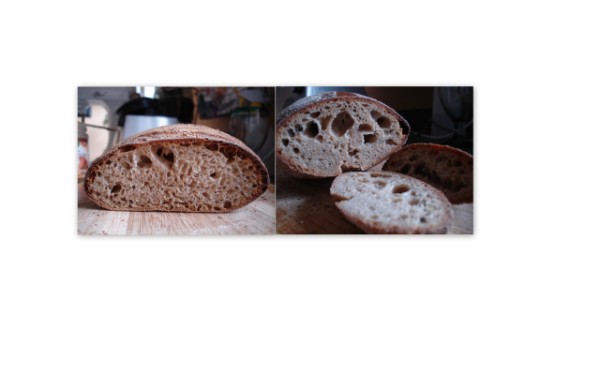From what books I've read so far, there seems to be a trend in recipes of retarding during bulk ferment for commercial-yeasted doughs, vs. retarding during proofing for sourdough. I'm not sure, I might be seeing patterns where there are none, though. Anyway, is there a difference in flavor/taste/ease-of-baking in the two methods? What are the tradeoffs in the two methods, and what would be the difference in characteristics..?
I do retarding during bulk ferment for my baguettes and my sourdough, largely for convenience reasons (but what I get is tasty too). I did do a retarded proof on Levy's brioche, which has like 19 steps over 6 weeks (kidding), and that did make probably the best loaf of bread I've ever had.
The reason that I don't proof much in the fridge is a question of space. The bulk ferment is pretty easy. I have 8 2 gallon Cambro containers. Every thursday night, I do 4 batches of baguettes and 4 of sourdough (16 and 28 loaves respectively), and stick them in the fridge. I pulled a shelf, and now these fit well. The rub for me is that even 2 loaves of shaped dough take up a disproportionate amount of space in the fridge, and under no circumstances could I proof that many. In an ideal world, I would probably do a retarded proof at both steps, but it is just not convenient.
Today being Thursday, I sure would like to see how that looks in your refrigerator. Do you bake them in a single session?
Eric
I'll probably make the dough shortly.The workflow is soemthing like this on friday
7:30 to 9:30 in 1/2 hour increments- shape sourdough boules for poofing.
10:30-1- Bake boules in 4 batches of 4.
Throughout the rest of the day is mixing and baking if things that I just proof at room temp.
About 8pm- Bake baguettes in batches of 12 (I use 4 3 baguette pans).
I do both, with different breads. I have never done a controlled experiment, comparing the alternatives using the same recipe, which would be interesting.
My impression is that, when retarding in bulk, the dough is significantly less elastic and more extensible. I assume this is because proteases have degraded the gluten somewhat. This may be an advantage, if you are going to be making baguettes, for example, where greater extensibility makes shaping easier, or when you are making dough for pizza.
I have the impression that retarding formed loaves results in a slightly less open crumb structure, but I've gotten inconsistent results in this regard, so I'm not sure.
Suas has a most complete and technical discussion of different retardation techniques. If you have access to his "Advanced Bread and Pastry" book, you might want to read it. Since you are talking about sourdough breads, he says that the increased acid in SD's protects the dough somewhat from protein degradation. For non-sourdoughs, Suas talks about the baker making adjustments in the flours used, the amount of yeast used, the dough hydration, the amount of mixing and the use of dough conditioners (ascorbic acid) to compensate for the effects of retardation on the final product. Maybe TMI for the average home baker, but interesting.
David
That makes good sense, David.
Related to that, another advantage of retarding during final proof, is that you have greater control over the dough development if you do it this way. You get away with a very brief initial mix, and then adjust dough strength by the amount of folds you give it afterwards during bulk fermentation. Fermentation times are often shorter for straight doughs (I'm thinking about your average straight dough) and dough development relies to a lesser extent on folding to develop strength, so you're more free to retard whenever you want. Perhaps?
Thanks, all.
David, yes, I've Suas' book on my to-read list, I should get it next week. I'm not a consistent enough baker to really validate your observation that "less open crumb if retarding formed loaf", but in my limited experience, this has (anecdotally, YMMV, blah blah) been the case. My belief at the time was that it's because the loaf was unevenly dechilled, but it might just be the effect of retarding the formed loaf like you said. Thanks!
Hi venkitac,
At a recent class at KAF, Hamelman and James MacGuire discussed the pros and cons of retarding bulk dough versus retarding shaped loaves. My notes indicate them as stating that retarding the loaves yields more tang in the finished product, along with tiny bubbles in the crust (regarded as a 'defect' in competition apparently, but if we're not at that level.....)
Hope that sheds some light.
Larry
Thanks! After having read all this (Suas is still pending) I think at this point, for me, choice of retardation method is going to be based on convenience now - like bassopotamus said:)
Last weekend, I did an experiment. I "semi-followed" Leader's Quintessential French sourdough recipe (using my own starter but his dough recipe). At the last stage, instead of putting the loaves into the oven, I put one loaf in the fridge and the other one in the kitchen for 16 hours.
When I looked at the loaves next morning, the kitchen ne olooked a bit overproofed (I think the kitchen temp was below 20C). (left pic: kitchen; right pic: fridge)
I baked it anyway. I also took the loaf in the fridge out and let it came to room temp.. After 90 minutes of waiting, the loaf rised for about 25%. I could have waited a bit longer, but my patience wasn't co-operating, so I put it in the oven.
The result? They both tasted great. The kitchen loaf has a very pillow-y texture but lack in flavour (see pic on the left). The fridge loaf has a very chewy texture with a bit of sour taste.
Bertinet mentioned in his book that dough can be retarded for 16-18 hours in order to let the dough to develop its flavour. In one chapter he says the dough is to be kept in cooler room temp.. But in another chapter he says keep the dough in the fridge. Should I retard the loaf in the fridge or not? Maybe it is about whatever works for your schedule...still learning.